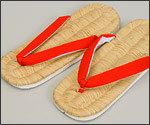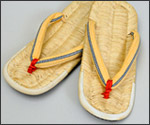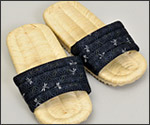Toyokuni Zori (Japanese Sandals) (Sagae City)
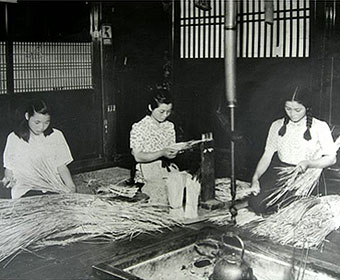
Photo provided by Karube-Zori
History/Outline
Between the late Edo period (mid-19th century) and the early Showa period (early 20th century) Sagae became the largest production area of Zori-omote (Japanese sandals) in Japan.
Sagae City and Kahoku Town have long been areas of high-quality rice production, as they contain the Sagae River, a tributary of the Mogami River, the mother river of Yamagata Prefecture. Zori production in these regions using
straw from rice plants is said to have started during the late Edo period (mid-19th century) when Goro-emon, the 8th generation proprietor of the Tamiya Family, began teaching farmers how to make zori as a side-business during the winter
months. By 1887 almost all farmers in these regions made sandals, and it became the largest production area of Japanese sandals in Japan by the early Showa period (early 20th century).
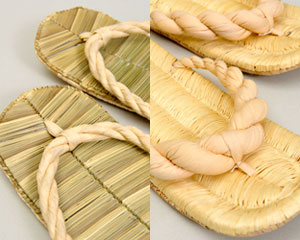
Techniques/Characteristics
The only authentic hand-knitted sandals in Japan using rice straw from Toyokuni, a near-extinct variety of rice.
Presently, there are only 5 people who can knit sandals in Sagae City. Handmade sandals are produced and sold by Karube-Zori. Recently Toyokuni, which is said to be near extinct, has been cultivated and used to produce
sandals. Sagae City is the only place in Japan where traditional sandals are produced by hand. They are popular with those who value authentic goods, such as professionals engaged in making historically accurate television programs or movies.
Main Products
●Toyokuni Zori ●Toyokuni Sanada Zori ●Toyokuni Sandals ●Toyokuni Ukon Geta
